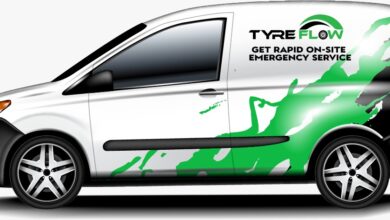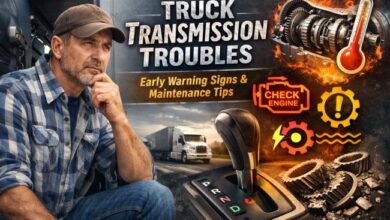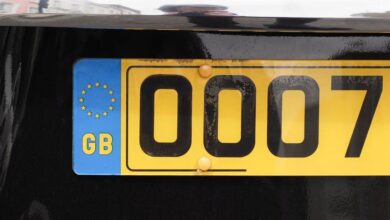Tie Rod Replacement: Should You Do It Yourself or Hire a Mechanic?
Are you noticing uneven tire wear or a loose steering wheel? A bad tie rod might be the problem. Tie rods are key to your car’s steering and suspension, keeping it stable and precise.
If a tie rod goes wrong, you need to replace it to keep your car safe and running well. But should you do it yourself or get a professional mechanic to do it? This choice can be tough, mainly if you’re not sure about the job’s complexity.
In this article, we’ll help you decide. We’ll look at the good and bad of DIY replacement versus getting a pro. Our goal is to help you make a smart choice.
Understanding Tie Rods: Their Importance and Function
Tie rods are key to your vehicle’s steering and suspension systems. They connect the steering rack to the wheel hub. This connection is vital for steering the vehicle in the direction you want.
What Is a Tie Rod?
A tie rod is a long, rod-shaped part that links the steering rack to the steering knuckle. It’s adjustable, helping to align the vehicle’s wheels precisely. This ensures the vehicle’s stability and accurate steering.
How Tie Rods Affect Steering and Suspension
Tie rods play a big role in steering and suspension. They keep the wheels aligned, which is important for even tire wear and stable handling. If tie rods are worn or damaged, steering can become loose or imprecise.
Worn tie rods can also affect the suspension system. They can cause uneven stress on suspension parts, leading to early wear or failure.
Signs That Your Tie Rods May Need Replacement
It’s important to know when your tie rods need replacing. Look out for these signs:
- Loose or vague steering
- Uneven tire wear
- Clunking or rattling noises from the front suspension
- Visible damage or wear on the tie rod ends
If you see any of these signs, check your tie rods. If they’re damaged, it’s time for a replacement.
| Signs | Description | Implication |
| Loose Steering | Feeling of looseness in the steering wheel | Potential wear on tie rods or other steering components |
| Uneven Tire Wear | Tires wearing down unevenly | Possible misalignment due to worn tie rods |
| Clunking Noises | Noises coming from the front suspension | Worn or loose tie rods or other suspension issues |
DIY Tie Rod Replacement: Is It Worth It?
Thinking about doing your tie rod replacement yourself? It’s a big job that can be done at home. But, it needs careful planning and doing.
Required Tools for a DIY Job
First, make sure you have the right tools. You’ll need:
- A socket set with various sizes to fit different bolts
- A tie rod end remover for safely detaching the tie rod ends
- A torque wrench for tightening bolts to the correct specification
- Jack stands for safely lifting and supporting the vehicle
Having the right tools makes the job easier. It also helps avoid mistakes that could cause more damage or safety problems.
Step-by-Step Guide to Replacing Tie Rods at Home
Replacing tie rods involves several key steps:
- Jack up the vehicle and remove the wheel to access the tie rod.
- Disconnect the tie rod end from the steering knuckle.
- Remove the inner tie rod boot and clamp.
- Use a tie rod end remover to separate the tie rod end from the inner tie rod.
- Install the new tie rod end and reassemble everything in reverse order.
Always check your vehicle’s repair manual for specific instructions and torque specifications.
Common Mistakes to Avoid During DIY Replacement
When replacing tie rods, there are several common mistakes to watch out for:
| Mistake | Consequence | Prevention |
| Incorrectly tightening bolts | Damage to the steering system or wheel bearings | Use a torque wrench to specifications |
| Failing to align the wheels after replacement | Uneven tire wear and poor handling | Get a wheel alignment done after the replacement |
| Not checking for other worn-out parts | Premature wear on new parts or further damage | Inspect other suspension and steering components |
Knowing these potential pitfalls helps you avoid them. This way, you can have a successful DIY tie rod replacement.
When to Consider Hiring a Mechanic
Replacing tie rods is a task that needs careful thought. It depends on your mechanical skills and the job’s complexity. Some car owners might feel ready to do it themselves. But others might find it harder than they thought.
The Complexity of Tie Rod Replacement
Tie rod replacement is more than just swapping parts. You need to understand the car’s steering and suspension. You also need special tools. The job involves making adjustments for proper alignment and to avoid uneven tire wear.
The complexity of the task is a big factor in deciding to hire a mechanic. If you’re not sure about the process or lack experience, it’s best to get professional help.
Benefits of Professional Expertise
Professional mechanics offer valuable expertise in tie rod replacement. They have the training, experience, and tools to do the job well. Some benefits of hiring a professional include:
- Accurate diagnosis of related issues
- Proper alignment and adjustment of the steering system
- Warranty on the work performed
- Time-saving, as the job is done quickly and efficiently
For many, the peace of mind that comes with knowing the job is done right is worth the cost of hiring a mechanic.
Time vs. Cost: Making the Right Choice
When choosing between DIY and professional tie rod replacement, think about time and cost. DIY might seem cheaper at first, but consider the potential for mistakes and your time’s value.
| Aspect | DIY | Professional |
| Cost | Parts only (approx. $200-$500) | Labor + parts (approx. $500-$1000) |
| Time | Several hours to a full day | Typically a few hours |
| Warranty | No warranty | Warranty on labor |
The decision to hire a mechanic for tie rod replacement depends on your comfort level, the job’s complexity, and your evaluation of time and cost.
Cost Analysis: DIY vs. Mechanic
Replacing tie rods can cost a lot, depending on if you do it yourself or get a mechanic. This section breaks down the costs for both options. It helps you decide what’s best for your budget and needs.
Breakdown of DIY Costs
DIY tie rod replacement mainly involves the cost of parts and tools.
- Replacement Parts: Tie rod ends and other parts can cost between $50 to $200. This depends on quality and brand.
- Tools: You might need to buy tools like a ball joint separator or tie rod end remover. This can add $50 to $100 to your total.
DIY tie rod replacement can cost between $100 and $300. This makes it a cost-effective option.
Comparing Mechanic Labor Fees
Getting a mechanic to replace your tie rods includes parts and labor costs. Labor fees vary based on the mechanic’s rate and job complexity.
- Labor Costs: Labor can cost between $100 and $300. This depends on the mechanic’s rate and job time.
- Total Cost: With parts and labor, the total cost can range from $200 to $600.
Hiring a mechanic is more expensive upfront. But, it ensures professional workmanship.
Long-term Savings Considerations
When looking at tie rod replacement costs, think about long-term savings.
- DIY Potential Savings: DIY can save on labor costs. It might also save you money on future repairs if you get better at DIY car work.
- Mechanic Quality Assurance: A professional mechanic does the job right. This can save you money on future problems from DIY mistakes.
Choosing between DIY and a mechanic depends on your comfort with car repairs, the job’s complexity, and your budget.
Safety Considerations in Tie Rod Replacement
Replacing a tie rod is a task that needs careful safety thought to avoid risks on the road. Safety is key, whether you’re doing it yourself or getting a mechanic. Right installation and sticking to safety rules are vital for your car’s best performance and your safety.
Why Proper Installation Matters
Getting a tie rod right is key because it affects your car’s steering and suspension. Wrong installation can cause uneven tire wear, less stability, and even accidents. Always follow the maker’s instructions and use the right tools to avoid these problems.
Risks of Incorrect DIY Repairs
DIY tie rod replacement comes with risks like wrong alignment, not tightening enough, and missing safety steps. These errors can harm your car’s safety and performance. Knowing the signs of a bad tie rod before starting helps you understand the repair needed.
How Mechanics Ensure Safety Standards
Professional mechanics follow strict safety rules for tie rod replacement. They use specialized tools and stick to the maker’s guidelines for a safe and correct job. Getting a mechanic means you get their experience and knowledge, lowering error risks.
| Aspect | DIY Approach | Mechanic’s Approach |
| Safety Protocols | Dependent on individual’s knowledge and adherence to safety guidelines | Trained professionals following strict safety standards |
| Tools and Equipment | May lack specialized tools, potentially leading to improper installation | Access to and experience with specialized equipment for precise work |
| Risk of Errors | Higher risk due to potential lack of experience and knowledge | Lower risk due to training and experience |
| Warranty and Liability | No warranty; individual is liable for any mistakes | Work is typically under warranty; mechanic is liable for errors |
Knowing the safety aspects of tie rod replacement helps car owners decide if they should do it themselves or get a mechanic. Following tie rod replacement tips and tricks can also improve the repair’s success.
Real-Life Experiences: DIY vs. Professional Replacement
Tie rod replacement can be tough, and real-life experiences show if DIY or professional help is better. Many car owners have shared their stories. They talk about the good and bad of each method.
Testimonials from DIY Enthusiasts
DIY fans love the feeling of fixing their tie rods themselves. John from California said:
“I replaced my tie rods myself, and it was a great learning experience. I saved money and gained confidence in my ability to tackle car repairs.”
But he also said having the right tools and a good manual is key.
Emily also talked about saving money by doing it herself: “By doing it myself, I avoided labor costs, which were a significant portion of the total expense.” She noted it took a lot of time and patience.
Mechanics Share Their Insights
Professional mechanics have a lot of experience. Mark, a seasoned mechanic, said:
“While DIY replacement is possible, it’s not always the best choice. Improper installation can lead to safety issues and further damage to the vehicle.”
He stressed the need for proper training and tools.
Jane, another mechanic, said professional replacement is better. It ensures the job is done right and fast, saving time and avoiding future problems.
The Importance of Personal Comfort Levels
Choosing between DIY and professional tie rod replacement depends on your comfort with car repairs. If you enjoy DIY projects and are mechanically inclined, it might be rewarding. But if you’re unsure or uncomfortable, it’s best to get professional help.
Remember, the wrong tie rod replacement can cause steering problems, which are dangerous. So, think about the pros and cons and what you’re comfortable with.
Tools of the Trade: What You Need
Knowing what tools you need for tie rod replacement is key. Whether you’re a DIYer or a mechanic, having the right tools is crucial. You’ll need a mix of standard and specialized tools to do the job right and safely.
Essential Tools for DIY Tie Rod Replacement
For a DIY tie rod replacement, having the right tools is essential. Here are some must-haves:
- Socket set: A good socket set is needed for removing and installing tie rods.
- Tie rod end remover: This tool helps separate the tie rod end from the steering knuckle.
- Ball joint separator: It’s useful for separating the ball joint from the control arm.
- Torque wrench: It ensures bolts are tightened correctly.
These tools are key for a successful DIY tie rod replacement. Always check your vehicle’s repair manual for tool recommendations.
Specialized Equipment Mechanics May Use
Professional mechanics use advanced and specialized equipment. This includes:
- Hydraulic press: It’s useful for pressing out old tie rod ends and pressing in new ones.
- Steering alignment machine: It ensures the vehicle’s steering is aligned after tie rod replacement.
- Specialized tie rod end pullers: These tools are designed for specific vehicle models and make removal easier.
While these tools are not needed for DIY replacement, they can make the job easier and more accurate.
Tips for Borrowing or Renting Tools
If you don’t want to buy specialized tools, borrowing or renting is a good option. Here are some tips:
- Check with local auto parts stores: Some stores offer tool rental services for specific jobs.
- Join a local DIY automotive community: Members often lend tools to each other.
- Consider buying used tools: Online marketplaces and salvage yards have gently used tools for sale.
By exploring these options, DIY enthusiasts can get the tools they need without a big upfront cost.
Maintaining Your Vehicle After Tie Rod Replacement
Replacing tie rods is just the start. Keeping your vehicle in top shape is key for safety and performance. After installing new tie rods, it’s important to stick to a maintenance plan. This ensures they work well over time.
Importance of Regular Inspections
Regular checks are vital to catch problems early. Inspecting your vehicle’s alignment and suspension parts often helps avoid wear on your new tie rods.
During these checks, look for wear or damage on other parts. Finding issues early can save you from expensive fixes later.
Aligning Your Vehicle Post-Replacement
Getting your vehicle’s alignment checked after tie rod replacement is a must. Proper alignment means your vehicle drives straight, reducing tire wear and other issues.
An alignment check adjusts your vehicle’s wheel angles to match the manufacturer’s specs. This can help your new tie rods last longer and improve your vehicle’s performance.
Signs of Further Issues to Monitor
Even with successful tie rod replacement and alignment, watch for signs of more problems. Listen for unusual noises when turning or driving straight. These sounds can mean steering or suspension issues.
Also, notice any vibrations in the steering wheel or if your vehicle pulls to one side. These signs might point to tie rod or other component problems.
If you see these signs, get your vehicle checked by a mechanic. They can find the problem and suggest fixes to keep your vehicle running well.
Conclusion: Making the Best Choice for You
Choosing between DIY tie rod replacement or hiring a mechanic is tough. Think about the good and bad of each option. This will help you pick what’s best for your car’s safety and how well it runs.
Weighing the Pros and Cons
DIY tie rod replacement can save money and give you a feeling of accomplishment. A good guide can help you through it. But, you must know if you’re good with tools and have enough time.
Hiring a mechanic means you get expert help and a warranty. This is key when talking about DIY vs mechanic tie rod replacement.
Final Tips for Your Decision
Think about how comfortable you are with DIY repairs, the job’s complexity, and your budget. If DIY, make sure you have the right tools and follow a good guide.
If you choose a mechanic, look for local options and compare prices. This will help you find the best service for your needs.
Resources for Further Research
For more info, check out automotive forums, repair manuals, and manufacturer guidelines. These can give you insights to help you decide. They ensure your tie rod replacement is done right, whether DIY or by a pro.
FAQ
What are the signs that my tie rods need replacement?
Signs your tie rods need replacing include uneven tire wear and vibrations in the steering wheel. You might also notice loose or stiff steering and clunking noises when turning.
Can I replace tie rods myself, or should I hire a mechanic?
Replacing tie rods can be a DIY task if you have the right tools and experience. But, if you’re unsure or uncomfortable, it’s best to hire a professional. They ensure proper installation and safety.
How much does it cost to replace tie rods?
The cost to replace tie rods varies. DIY costs include the parts’ price. Mechanic labor fees can range from $100 to $300 or more per hour, based on the shop and location.
What tools are needed for a DIY tie rod replacement?
For DIY tie rod replacement, you’ll need a tie rod end remover, a ball joint separator, a torque wrench, and a socket set. You might also need a hydraulic press or a puller, depending on your vehicle.
How long does it take to replace tie rods?
Replacing tie rods can take several hours if you’re doing it yourself. A professional mechanic might finish it in under an hour, depending on the job’s complexity.
What are the risks of incorrect DIY tie rod replacement?
Incorrect DIY tie rod replacement can be dangerous. It can cause loose or stiff steering, uneven tire wear, and increase accident risk. It can also damage your vehicle’s steering and suspension.
How can I ensure proper alignment after tie rod replacement?
For proper alignment after tie rod replacement, have a professional mechanic check your vehicle’s alignment. They can adjust it as needed to prevent uneven tire wear and ensure safe steering.
What are the benefits of hiring a mechanic for tie rod replacement?
Hiring a mechanic for tie rod replacement offers many benefits. They ensure proper installation, safety, and warranty coverage. Mechanics have the experience and tools needed for efficient work.
Can I drive my vehicle with a bad tie rod?
While driving with a bad tie rod is possible, it’s not safe. A faulty tie rod can lead to uneven tire wear, loose or stiff steering, and increased accident risk. It’s best to replace tie rods as soon as possible for safe driving.
How often should I inspect my tie rods?
Regular inspections can help spot worn or damaged tie rods. It’s wise to inspect your tie rods during routine maintenance, like oil changes or tire rotations, or at least once a year.



